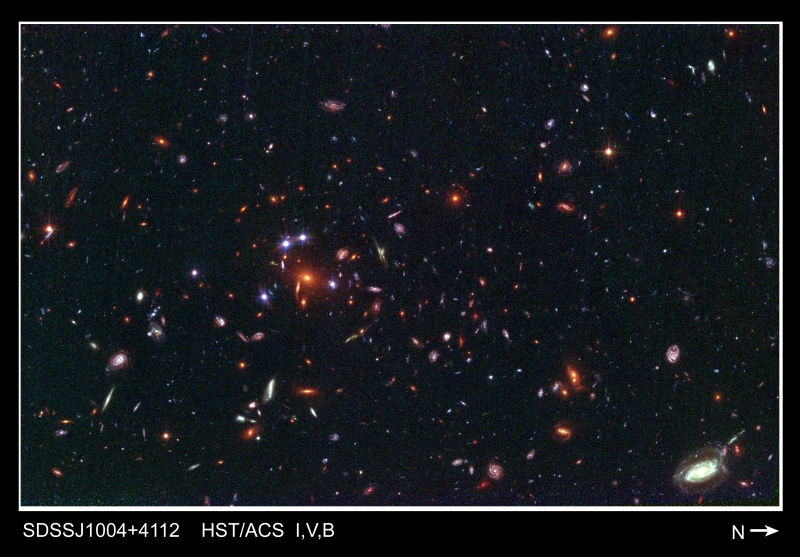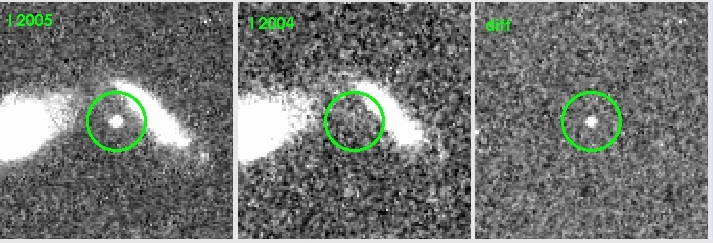
click here for a full resolution color image
NASA/ESA image release: European homepage | STScI / HubbleSite
(Also picked up by: APOD,Spaceflight Now,New Scientist, Maariv)

|
Image from HST Proposal 10509 click here for a full resolution color image NASA/ESA image release: European homepage | STScI / HubbleSite (Also picked up by: APOD,Spaceflight Now,New Scientist, Maariv) |
 |
Discovery of Multiply Imaged Galaxies behind the Cluster and Lensed Quasar SDSS J1004+4112 Authors: Keren Sharon1, Eran O. Ofek1, Graham P. Smith2, Tom J. Broadhurst1, Dan Maoz1, Christopher S. Kochanek3, Masamune Oguri4,5, Yasushi Suto4, Naohisa Inada6, Emilio E. Falco7 [1Tel Aviv University 2California Institute of Technology 3Ohio State University 4Department of Physics, University of Tokyo 5Princeton University 7Institute of Astronomy, University of Tokyo] Journal-ref: Astrophys.J. 629 (2005) L73-L76 Abstract: We have identified three multiply imaged galaxies in Hubble Space Telescope images of the redshift z=0.68 cluster responsible for the large-separation quadruply lensed quasar, SDSS J1004+4112. Spectroscopic redshifts have been secured for two of these systems using the Keck I 10m telescope. The most distant lensed galaxy, at z=3.332, forms at least four images, and an Einstein ring encompassing 3.1 times more area than the Einstein ring of the lensed QSO images at z=1.74, due to the greater source distance. For a second multiply imaged galaxy, we identify Ly_alpha emission at a redshift of z=2.74. The cluster mass profile can be constrained from near the center of the brightest cluster galaxy, where we observe both a radial arc and the fifth image of the lensed quasar, to the Einstein radius of the highest redshift galaxy, ~110 kpc. Our preliminary modeling indicates that the mass approximates an elliptical body, with an average projected logarithmic gradient of ~-0.5. The system is potentially useful for a direct measurement of world models in a previously untested redshift range. [ download ps.gz | ADS | Astro-ph] |

|
SN candidates in SDSS1004 In a comparison between the new image and an image taken during HST cycle 13, we discovered two SN candidates. More details here. |